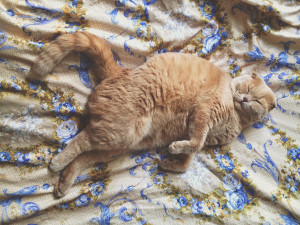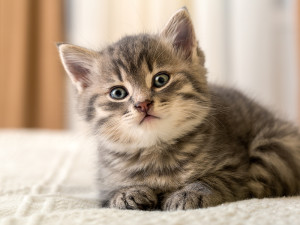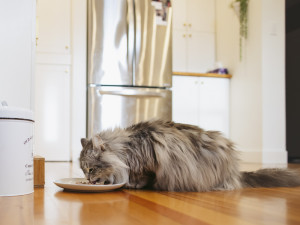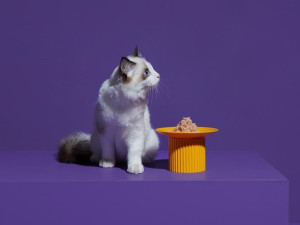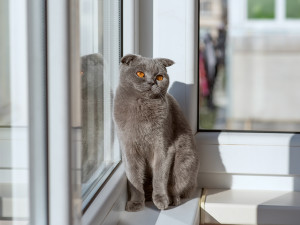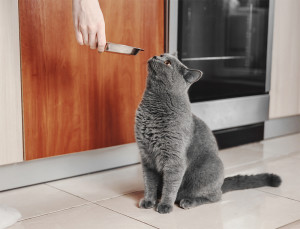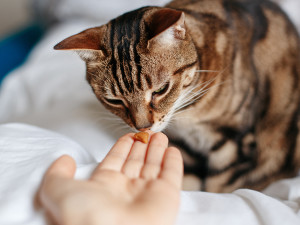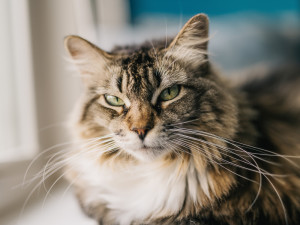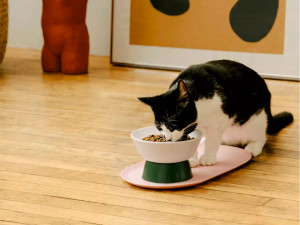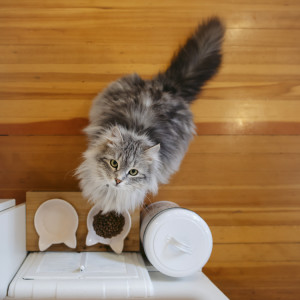Why Is My Cat Not Eating? Causes, Symptoms, and Treatment
A veterinary nutritionist explains why your cat isn’t eating and how to increase their appetite.
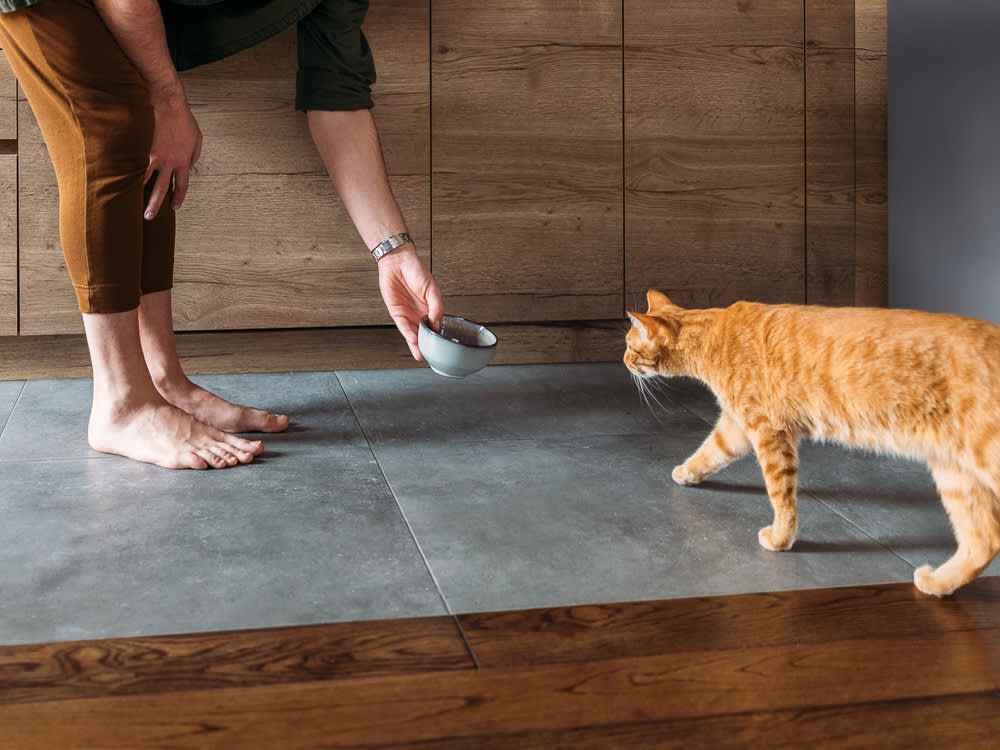
share article
Is there anything you wouldn’t do to make yourself worthy of your cat’s affection? You scoop poop from their litter box. You let them sleep on your face. You tolerate 2 a.m. zoomiesopens in a new tab. And, of course, you try to feed them the very best food. Feeding is an act of love. But, contrary to how it sometimes feels, not eating isn’t necessarily an act of defiance.
What are the causes of cats not eating?
There are several possible reasons for a cat not eating as much. Cat loss of appetite can be caused by food preferences; they may prefer a new food or food topping. A new cat not eating may be because of stress and trouble acclimating to a new space. Illness could also be the reason why your cat won’t eat. It’s important to see a vet to rule out any underlying illness like canceropens in a new tab, pancreatitisopens in a new tab, or intestinal problems. Dental problemsopens in a new tab and oral pain could also cause a cat to stop eating.
How long can a cat go without eating?
Technically, a healthy cat can live for up to two weeks without food and only three days without water — similarly to humans. That said, a cat hunger strike should be nipped in the bud early, because cats can become extremely weak within days of not eating. After three days of a cat not eating food, serious medical side effects of not eating can occur.
How can you help a cat who won’t eat?
Thankfully, there are many ways to encourage a cat to eat more. We turned to BluePearl Pet Hospitalopens in a new tab’s board-certified veterinary nutritionist Dr. Lindsey Bullen to break them down for us.
1. Let your new cat get acclimated.
If you’ve just brought a new cat or kitten homeopens in a new tab, there’s a good chance that they’re nervous and stressed. “A new cat may go into hiding when you first bring them home,” Dr. Bullen says. “At that moment, they are far more concerned with feeling safe than eating dinner.” Your new cat may also be hesitant to try a different food.
In a perfect world, you’d be able to transition them from their old diet to a new one over several days. But you may not know what your cat was previously being fed (or if they were fed “cat food” at all, if they were a stray). Change is hard, especially for cats. In both of these cases, they may need a little time to get acclimated to their new home and food before they settle into an eating routine.
2. Schedule mealtimes to keep tabs on their eating habits.
Underlying health issues are another reason for a cat loss of appetite. Unfortunately, cats are notoriously good at hiding when they don’t feel well, and that can make it hard to tell if there are changes to their eating habits. “I recommend giving cats set meals instead of free-feeding,” Dr. Bullen says. “Especially in a multi-cat householdopens in a new tab, it’s very difficult to tell how much each cat is eating when there’s just a bowl of food left out all the time.
“Meal feeding makes it easier to see who’s coming to the food dish and how much they’re eating. I also recommend weighing your cat once or twice a month. Subtle changes in weightopens in a new tab can be hard to see, particularly in long-haired cats. Regularly weighing them will help you detect changes and take action quicker.”
3. Introduce kittens to various foods early on.
Cats also have a reputation for being finicky eaters. Every cat is different, of course, but some certainly do have strong opinions about what they will (and won’t) eat. And we often chalk that up to part of their lovably maddening mystique. If you have a kitten, however, there are ways you can try to head off any picky tendencies. “It’s best to introduce cats to multiple kinds of foodsopens in a new tab when they’re young,” Dr. Bullen says.
“As carnivores, they will develop a preference for flavor and form, and it’s harder to get them to change later in life. So, while I don’t recommend rotational feeding forever, offering them canned food, kibble, chicken, and fish when they’re kittens can be helpful in preventing finicky habits in the future.”
4. Add cat food toppers to make meals more mouthwatering.
For adult cats, in addition to trying out different complete dietsopens in a new tab, there are steps you can take to make their food more interesting. “Warming up canned food will release flavors and aromas,” says Dr. Bullen. “You can accomplish the same effect with dry food by mixing in a little warm water.” There are also plenty of healthy foods you can add to their main diet.
Unseasoned puréed meats, cottage cheese, baby food, commercial food toppers, and cat supplementsopens in a new tab are all great options. Dr. Bullen’s go-to recommendation is FortiFlora Probiotic Supplementopens in a new tab. “It’s made from hydrolyzed animal digest and the majority of my patients love the flavor.”
5. Try different feeding set-ups.
Some cats like to eat off a plate on the counter, while others prefer a bowl on the floor. When choosing a dish, Dr. Bullen suggests avoiding metal or plastic, as both can alter the flavor or smell of the food. The right bowl can also prevent whisker fatigueopens in a new tab.
When should I be concerned and seek veterinary help?
You can see your vet to rule out health issues like cat anorexia. It can be frustrating to work through a food-related issue with your cat. But it’s important to understand that cat anorexia is a serious health concern that can spiral quickly. “When a pet’s GI tract doesn’t get appropriate nutrients for about three days, the next generation of cells can’t function normally,” Dr. Bullen says. “Ultimately, anorexia is another word for self-cannibalism, and that’s not conducive to life.”
Well, sure. Put it that way, and a few skipped meals do seem like a big deal. So, when does not eating warrant a trip to the vet? “If your adult cat goes two to three days without eating, it’s time to see a veterinarian. And if their loss of appetite coincides with vomiting, diarrhea, lethargy, or changes in behavior, then they need to be seen even sooner — in 24-36 hours.” For kittens, the timeline is shorter still: “Kittens need to eat multiple meals a day. They should see a vet if it’s been more than 24 hours without eating.”
What foods can I tempt my cat to eat with?
There are several great meal treats for cats. Foods with very strong scents, such as tuna or sardines, may get the attention of a cat who won’t eat. Cats are also more likely to eat food that has been warmed up.
You may also want to add a meal topper opens in a new tabto your cat’s meal. Things like chicken broth, gravy, and sushi flakes may motivate your cat to finish their meal.
FAQs (People Also Ask)
Can stress cause a cat to stop eating?
Yes, stress is a common reason for a cat not eating as much. Make sure your cat has a space to themself where they can feel safe during mealtime.
Why is my cat suddenly lethargic and not eating?
There are potential several reasons a cat won’t eat, including stress, food preferences, and illness. See your vet to rule out any underlying health issues.
Why is my cat not eating and throwing up?
A cat who is not eating and throwing up should be seen by a veterinarian to rule out any potential issues including pancreatitis, cancer, and infections.
References

Kate Sheofsky
Kate Sheofsky hails from San Francisco, where she developed a love of writing, Giants baseball, and houses she can’t afford. She currently lives in Portland, OR, and works as a freelance writer and content strategist. When not typing away on her laptop, she enjoys tooling around the city with her two rescue pups searching for tasty food and sunny patios.
Related articles
![Hand holding food bowl peeks into frame as a cat looks up expectantly]() opens in a new tab
opens in a new tabThe Ultimate Puzzle: Picking the Right Cat Food
Four veterinary nutritionists pick apart the claims so that you can choose the right food for your kitty.
![cat being offered a treat or vitamin]() opens in a new tab
opens in a new tabThe Best Supplements and Vitamins for Cat Health
Not your mama’s multivitamin.
![A woman feeding food to her cat at a dining room table]() opens in a new tab
opens in a new tabIs Homemade Cat Food Better Than Kibble and Canned?
Integrative veterinarian Dr. Ruth Roberts on what ingredients to include when considering a home-cooked diet for your cat.
![Close Up Portrait Of A Moody Maine Coon Cat]() opens in a new tab
opens in a new tabWhisker Fatigue — Apparently It’s a Thing
Or, is it a genius marketing ploy to get you to buy fancy “whisker friendly” cat bowls? We asked a vet...
![Cat eating out of a contemporary, design-forward cat food dish made by Cat Person]() opens in a new tab
opens in a new tabBehind the Brand: Cat Person
The burgeoning start-up is creating cat food and furniture for modern pet parents.
![A fluffy cat looking up next to a food dish.]() opens in a new tab
opens in a new tab“Freeloading” Cats Won’t Work for Food
Cats prefer to be served, study says.

